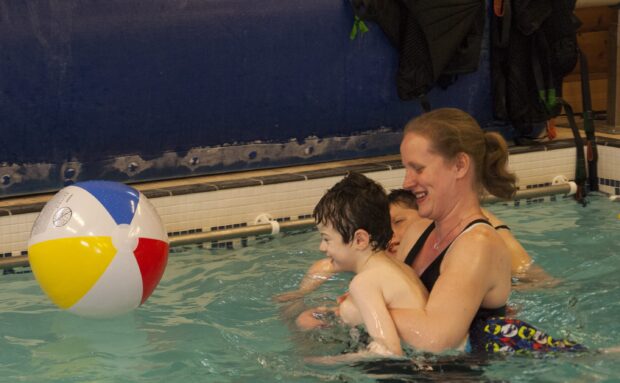
Ofsted and CQC (Care Quality Commission) jointly inspect LA SEND (local area special educational needs and disabilities) provision over a 5-day period. During these 5 days, we look at how well providers and commissioners in the local area work together. How do they identify, assess and meet the needs of children and young people with SEND (aged 0 to 25)? What difference does this make to how well prepared a young person with SEND is to live a happy, healthy and fulfilled life? Here, Matt Rooney, Ofsted Inspector (OI) talks about what happens on these inspections.
Before the inspection
First, Ofsted and the CQC confirm the joint inspection with the local authority and the clinical commissioning groups. I then discuss pre-inspection data and information with the lead HMI (Her Majesty’s Inspector).
We plan what we’ll look at, aligned to the inspection framework, set the timetable and decide the settings we’ll visit. We want to see a broad section of providers and services supporting children and young people.
In this particular case, we go to an early years setting, a children’s centre, mainstream and special schools, health providers (such as health visitors, school nurses and therapy services) and a further education college. We also review any data and extra information provided by the local area team.
Meetings with leaders
LA and health leaders tell us about their services, giving us an overview of their strengths and challenges. There can be 6 to 20 people attending each meeting and the information comes in thick and fast! I record the main elements and data to test during the inspection.
We review evidence with leaders, including any self-evaluation and strategic plans. We want to see if they’re having the desired impact. This helps us to check whether leadership and management are effective.
On the first afternoon, we speak to a wide range of leaders and practitioners from across health, education and social care. We focus on how they identify SEND, early intervention and children in specific circumstances. Leaders begin to bring their local SEND picture to life, and we explore the difference being made for children, young people and their families.
An early years leader tells me about the work of a specialist multi-agency identification panel for children under 5, which is leading to more timely diagnosis of autism spectrum disorders. The pre-inspection data review and meetings with other leaders back this up, so I flag the findings with the CQC inspector. We both test this with settings and parents later to see if this is the case.
I observe an EHC (education, health and care) plan assessment panel, noting their terms of reference, membership and effectiveness. I ask them to describe the impact their work has on the lives of children and young people with SEND and to tell me how they track and quality assure their processes.
Leaders and practitioners, including headteachers, SEN coordinators, governors, health and care managers, tell me about how the SEND reforms have changed their practice, systems and processes. They say that the quality of EHC plans continues to improve.
Practitioners and leaders share frustrations about the weaker links with other agencies, which can sometimes negatively impact on their ability to meet statutory timescales. The evidence from this group of professionals gives a clear picture of ‘life in the local area’ because they’re immersed in the systems, processes and practices that inspectors evaluate.
EHC plans are central to the reforms and are an important element in improving the lives of children and young people with SEND. We review a number of plans and look at the information and systems used in their formulation. We want to discover how well they capture the aspirations and assessed needs of the children and young people. Are children and young people’s views, and those of their families, represented throughout the EHC plan, the annual review process and any amendments? Are professionals’ contributions reflected in the final plan, especially in relation to outcomes?
I discuss my findings and explain my conclusions to a small group of practitioners and leaders from the local area. They agree with my observations and thank me for the session, saying that it’s helped them review how they might evaluate EHC plans in the future.

Gaining the views of parents and carers
Gathering evidence from parents and carers is an essential part of the whole inspection. We want to hear about what works well across a local area. We will:
- evaluate responses to a parent/carer survey
- look at individual emails received
- meet with many parents/carers at settings
- host an engagement session for parents/carers
- evaluate the impact of parental involvement through bodies such as parent/carer forums
At a meeting with 70 parents and carers, we discuss what's working well and potential improvements. Themes emerge. These include statutory timescales, systems, processes and specific providers or practitioners. Parents and carers have very clear views and their evidence is often compelling. There is lots of evidence to consider. Some express their total exhaustion and frustration, while others describe the positive work of practitioners as ‘life-changing and extremely positive’. This helps inspectors understand the real-life impact of the area’s implementation of the SEND reforms.
Engaging with children and young people
Children and young people are at the heart of SEND reforms. It's an absolute privilege to meet them in different settings, including early years, schools and colleges. They talk about the professionals who work with them and how they assess their needs to prepare them for adulthood. This indicates how well the local area is implementing the SEND reforms.
One young person tells me how a physiotherapist assessed her at college and she now receives specialist equipment. She’s completed an independent travel training programme with a group of friends and is more independent and travels to college on public transport. She also attends a youth group in her local town and meets up with friends to go to the cinema.
Groups of young people, supported by adults, use signs, symbols, pictures and assistive technologies to tell me about their high aspirations for the future. They’re determined to make things better for others and want to contribute to service improvements. They want to consult with their peers and engage in the Youth Parliament to improve the lives of people with SEND.

Feeding back
We meet senior leaders from the local area each morning. We give them an overview of the strengths and areas for development that we’ve noted from the previous day. This is their opportunity to question and brief us on any relevant matters.
We share our evidence evaluations with leaders throughout the inspection, giving detailed feedback. We align this to the inspection framework and the key lines of enquiry. At this point, we will say whether a written statement of action (WSOA) is likely. We will ask a local area for a WSOA if we have significant concerns about how effectively the area meets its duties or secures better outcomes for children with SEND. The statement should set out how the area will tackle these concerns and the timescale for improvements to be made.
As we draw to a close, we give leaders a confidential summary of our findings. It’s been an intense week of focused activity. Leaders say that the inspection has been thorough, fair and transparent. We thank them for their support over the course of the inspection.
After the inspection, we send a letter to the local area, which identifies specific strengths and areas for development. This is published on the Ofsted and CQC websites.
Matt Rooney is an Ofsted Inspector and interim head of St Giles School, Retford.
3 comments
Comment by Gwen posted on
It might also be a good idea to speak to parents and children of SEND who have been excluded and off rolled from schools. This may give a clearer picture of schools not meeting SEND needs.
Schools can keep these issues quiet/hidden.
Comment by June posted on
Interesting especially in hearing how children and young people and their families views inform the inspection. The initial points in ‘meeting with leaders’ and ‘before the inspection’ sections seem to have a lot of jargon to them. Don’t Her Majesty’s Inspectors play a key role in these inspections?
Comment by External Relations posted on
Hi Gwen, when we meet with parents as part of our local authority SEND inspections we often meet parents of children who have been excluded / off-rolled.